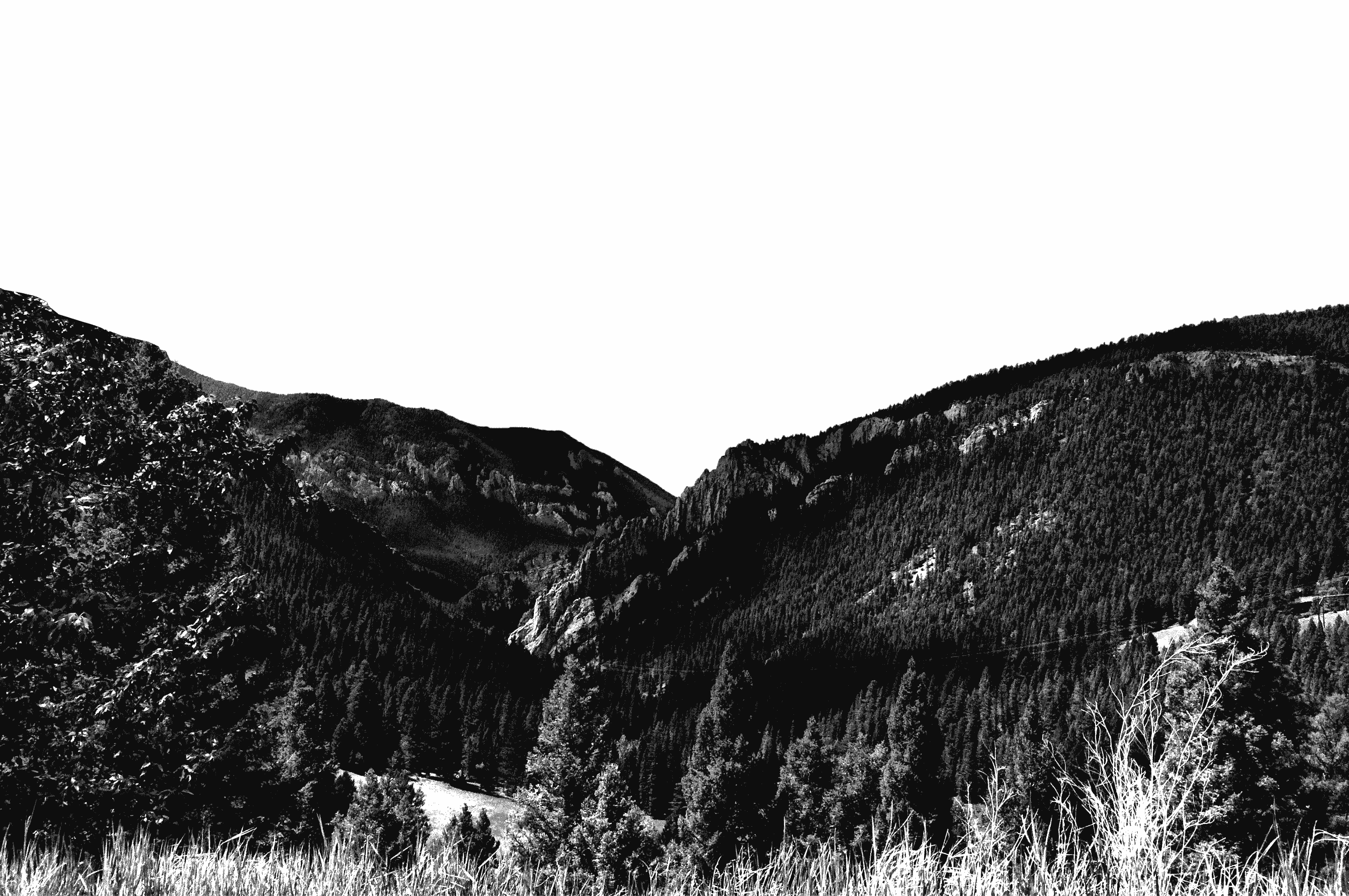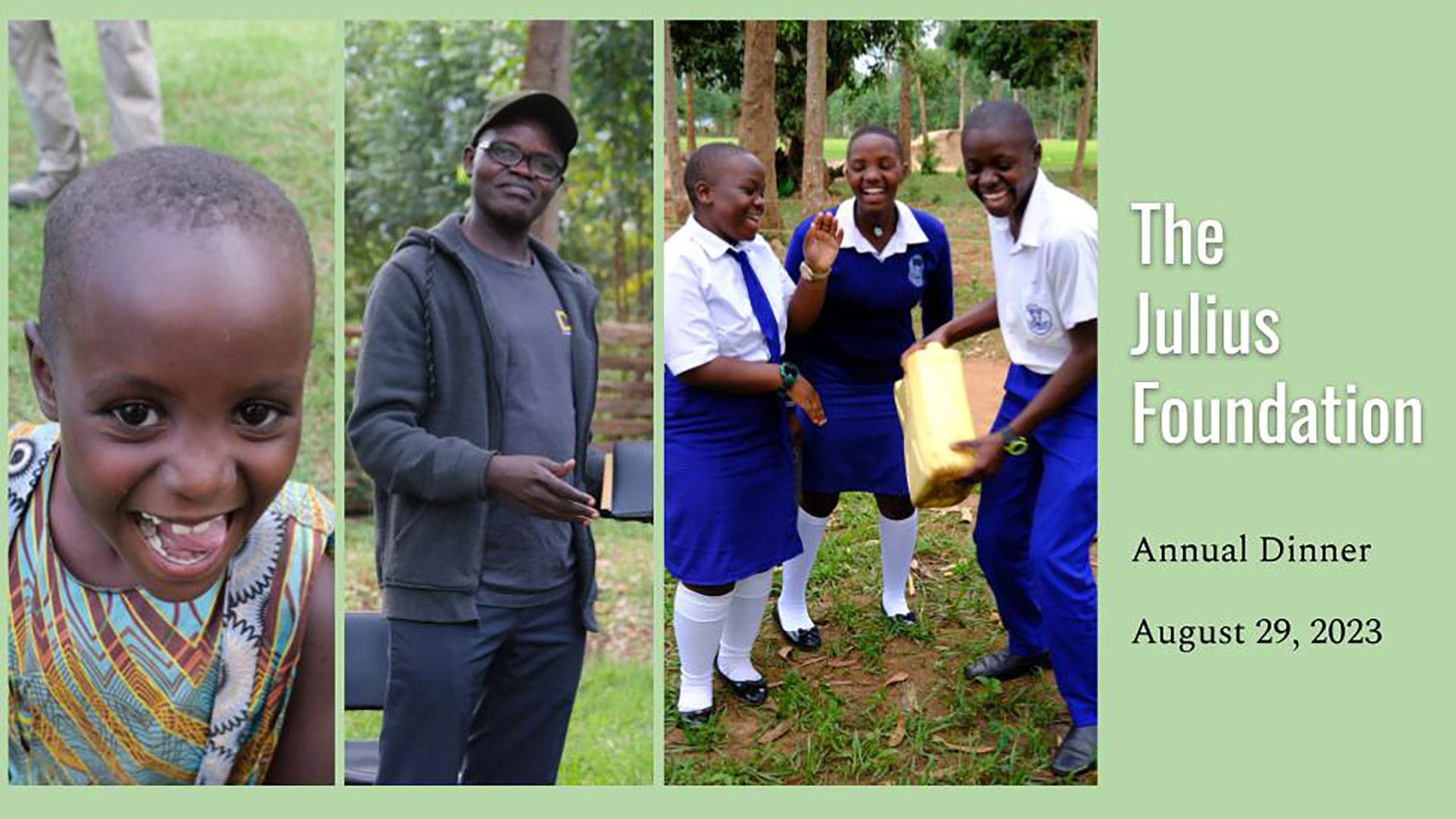Thank you Tony, and thank you to everyone who made tonight possible. Thanks in particular to Dr. Cech, who is a great gift to our community because he is a rare leader in the education world. He understands that you can't have an effective education without faith, and you can't have an effective faith without service. Dr Cech's steadfast support for programs like Engineers without Borders and his ongoing partnerships with organizations like The Julius Foundation prove that he knows this in his bones. Thank you Dr. Cech.
I would like to begin with the words of Jesus from the gospel of Matthew. The kingdom of heaven is like treasure hidden in a field. When a man found it, he hid it again, and then in his joy went and sold all he had and bought that field. Again, the kingdom of heaven is like a merchant looking for fine pearls. When he found one of great value, he went away and sold everything he had and bought it.
[SLIDE] Tonight I'd like to talk to you about real estate. When you get off the plane in Kampala, one of the first things you see while driving through town are houses, businesses and empty lots painted with signs reading, "this lot not for sale". Curious, I asked a friend why this signage was ubiquitous. The answer surprised me - land theft and real estate fraud is so common that if you leave a lot unsupervised for even a few days you may come back to find someone else's house occupying your property.
The further we got into our visit, the more I reflected on this idea. The words of the parable began to rattle around in my head. I wondered why this detail was so striking to me, and finally I realized: I have found the pearl of great price. My goal this evening is to give it to you. [SLIDE]
One of my responsibilities with The Julius Foundation board is to maintain our website. As the website owner, I have seen many pictures of the campus over the last few years. But standing there in the flesh, as you can imagine, was unlike anything a picture could convey. I can't give you that experience, but I'll share some impressions with you that hopefully give you a new appreciation for the miracle that is Holy Trinity School.
If you were to walk directly past this building you would find yourself looking up at the water tower which EWB installed a few years ago. If you were to climb that structure, as we did, here is what you would see. [SLIDE] On the top left is the kitchen, to which we will return in a moment. Behind that is an empty field where we hope to construct a new girls' dormitory in the near future. To the right of that field is a classroom in which students are currently boarding due to lack of dorm space. Next to the right are the canteen and the other side of that blue administrative building from the previous slide. Below that is a hedge encircling a small burial site. The land on which Holy Trinity is built belongs to the family of Fr Richard, whom you'll meet in a moment. His family members are buried in that little hedge. Think about that: the people here have literally put their blood into this school for the good of their children, as I think we all would do. At the bottom you can see classrooms including the computer and science labs, and the students having a presentation in the clearing.
[SLIDE] One thing that surprised me most about the campus was that this school is not just a school. Fr Richard, whom I mentioned earlier, took us on a tour of the campus. He showed us a large section of the campus which I didn't realize even existed. Prior to the pandemic it was a eucalyptus grove. However, to raise funds and meet operational costs during lockdown when students could not attend, the trees were cut and sold, then replaced with banana and coffee crops, which provide a sustainable source of income. These plants are symbiotic and commonly grown together, so the soil will not be exhausted or degraded as with other farming methods. [SLIDE]
In addition to seeing Holy Trinity literally producing fruit, I was pleased to see firsthand the fruits of the Julius Foundation's work over the last several years. Here you can see the spigot where students can obtain clean water, which you recall was a past EWB project. We saw the electricity in each of the buildings, as well as some of the good uses they have found for it - including lights, computers, and electric irons. Previously, the students would heat irons in fires, which you can imagine resulted in many burned fingers.
These projects are visible and impactful on the Holy Trinity campus. Life for students has changed for the better in many ways over the last few years. On the other hand, there are still many ways in which life for the students is in desperate need of improvement. [SLIDE]
On the left you can see the garbage pit which is not an unusual sight in the area. While the air around the school is very clean, not having a contained receptacle or disposal area means that clouds of burning plastic and other debris are always present. Since this is how garbage is commonly dealt with in the area, it’s not on our priority list for projects at the moment. But it gives you an idea of the little things that are part of everyday life for these students, which if found at Capital or Helena High School would be deemed an urgent public health crisis.
In the top center you can see the current cooking facility from which over 400 students are fed every day. In the bottom center you can see the current latrine soak pit, which is not only hazardous in terms of sanitary conditions and mosquito breeding, but also contributes to the air quality issue and is a falling hazard for students and animals. On the right is a picture of one of the classrooms currently being used as a dorm building. The students are cramped, must keep their belongings in a trunk on their bed, and have no mosquito nets to prevent malaria. I hope these images give you a sense of the land and facilities we are working with.
But the real treasure found on this land... [SLIDE] Is the people.
The moment we walked in the door we were greeted by the student body - clapping, cheering, even drumming. The enthusiasm and love they showed us were so moving. I have never felt such welcome and joy before. While we were there, we had the opportunity to celebrate Mass with the students for the Ugandan martyrs’ feast day. That might sound like just another feast, but trust me, in Uganda it is a national holiday and a BIG deal. [SLIDE]
All week we were greeted, thanked, even mobbed by crowds of students wishing to tell us their stories and take pictures with us. One student asked me a series of questions about colonialism and the global economy that nearly left me stumped. Another gave me this bracelet as a token of friendship. There was laughter, and singing, and dancing. And thousands of photographs. I wish I could show you all of them, but we would be here all night. [SLIDE]
After a few days of spending time with the students and surveying the grounds for future projects, we had a meeting with the elders from Kawango A and B villages. They expressed the same warm welcomes and sent their greetings and gratitude back to all our TJF supporters - they are so happy and thankful to consider each one of you their friends. The arrival of electricity in the village has been life-changing for everyone in the area. It took us a long time to get there, but know that your consistent and steadfast support are deeply appreciated. The next projects on the minds of the elders are the sanitation improvements and the construction of a new girls' dormitory. We learned that girls who walk down the remote dirt road to the school are often in danger of kidnapping. Safety and peace of mind will be much improved when we are able to construct onsite housing for all students to board at the school.
Standing there next to Tony is one of the students who stole our hearts. Her name is Juliet. She is interested in business and would like to study in America someday. We met many such students, each one eager to tell us their stories and welcome us to their home. On the last day the community had a pig roast in our honor, and Juliet spent her own money to buy a cake from the nearby town for one of our group who had a birthday. [SLIDE]
One of the most exciting moments of each day was our time spent with the kids in the village. They would run along behind our van shouting "HI MZUNGU BYE MZUNGU" which, if you don't know, mzungu is the somewhat endearing term for white people.
At the start I told you I had found the treasure in the field, the pearl of great value. Take a good long look, because here it is. These children are the treasure. These friendships are beyond value. This joy is precious and it is infectious. Fr Julius flew across the planet to give you this gift of joy in person. Receive it with open arms. And I promise that once he numbers you among his friends, you too will look for ways to give all you have for this pearl. [SLIDE]
I will close with this quote from Nelson Mandela that I saw at the Uganda
Martyrs University where we stayed for the week. “Education is the most powerful weapon; use it to change the world.” I went to Uganda expecting to get to know people, experience the culture and meet the community. I didn't expect the pearl of joy to completely upend my worldview. I think we in this country have lost our joy lately. All you have to do is turn on the news and see the threats of war, disease and unrest threatening our world and our future. Well, here is what I learned in Uganda: if our civilization, our species and our planet are to be saved, it must begin here: [SLIDE] In places like Kawango village, with the lives you touch through your generosity. That is the greatest treasure I can imagine. Thank you for joining us on this joyful mission.

